Key takeaways:
- Cryptocurrency mining pools enhance collaboration, providing a steady income stream and reducing the unpredictability of solo mining.
- When choosing a mining pool, consider the fee structure, payout scheme, and the pool’s reputation to avoid hidden costs and maximize profitability.
- Evaluate performance metrics like hash rate and payout consistency, along with the quality of support to ensure a reliable mining experience.

Understanding cryptocurrency pools
Cryptocurrency pools are essentially collaborative networks where miners unite their computational resources to increase the chances of successfully mining blocks. I remember the first time I joined a pool; it was like stepping into a community of like-minded individuals. I felt less isolated in my mining efforts, and seeing contributions from many people made me appreciate the collective strength we had.
Participating in a mining pool often feels like striking a balance between personal effort and team collaboration. Have you ever thought about how rewarding it is to share in the spoils of mining? Each time a block is mined, rewards are distributed among members, typically based on the amount of computational power they contributed. This collaborative approach allows even miners with limited resources to earn coins, which can be incredibly motivating.
In essence, cryptocurrency pools enable higher efficiency and reduced variance in earnings as they provide a steady stream of rewards rather than the uncertainty that comes with solo mining. I still recall the relief I felt as I earned my first consistent payouts. It highlighted the pool’s role not just as a resource, but as a lifeline in the challenging world of cryptocurrency mining.
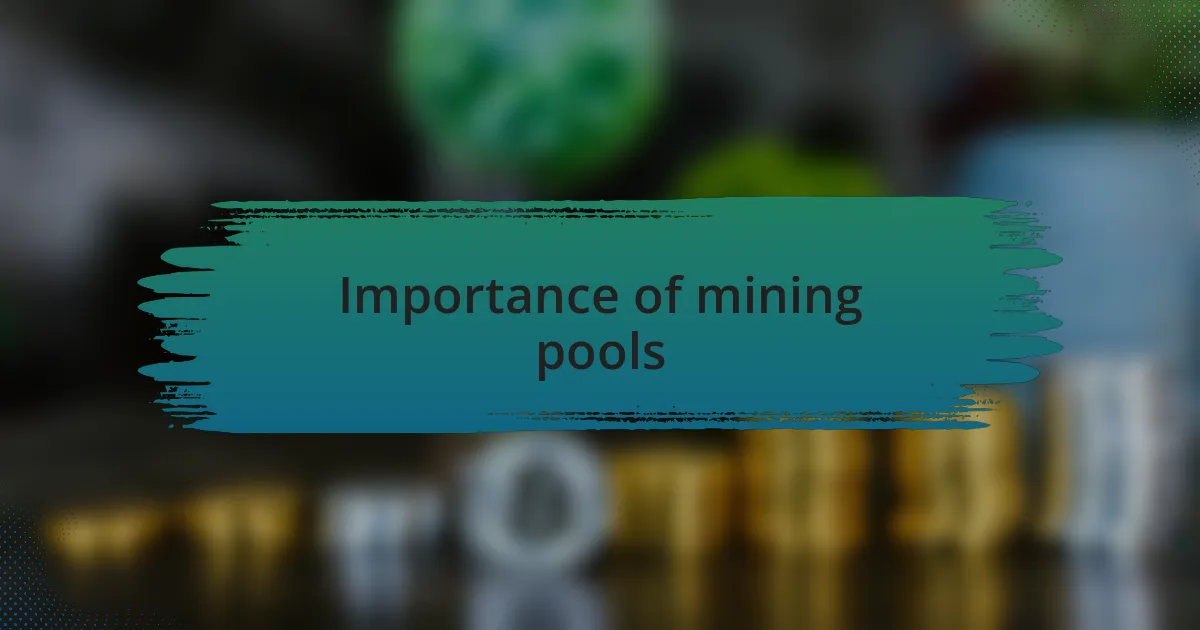
Importance of mining pools
Mining pools are essential because they lower the financial barriers for newcomers in the crypto space. When I first started mining, I was overwhelmed by the uncertainty of solo mining. Joining a pool transformed that uncertainty into a more predictable income stream, allowing me to focus on other aspects of my investment strategy without being consumed by anxiety.
Moreover, mining pools offer a safety net against the unpredictable nature of mining difficulty and block rewards. I remember discussing with a fellow miner how consistently earning a share of rewards can lead to a steadier growth of one’s crypto portfolio. Doesn’t it feel great to know that even during tough times in the market, your efforts will still bear fruit, albeit as a part of a collective?
Additionally, the community aspect of mining pools cannot be overstated. I cherish the insights I gained from other members, which helped me improve my mining techniques. Have you considered how sharing knowledge and strategies within a community can lead to collective improvement? It’s a symbiotic relationship where everyone benefits, making the mining experience not only profitable but also enriching on a personal level.
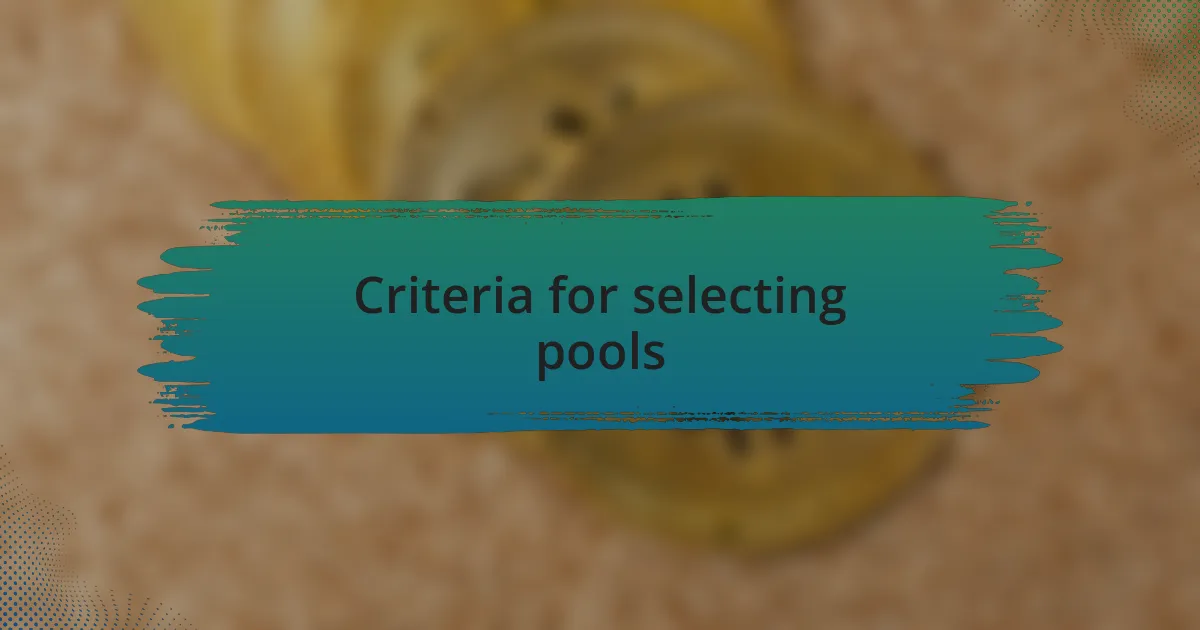
Criteria for selecting pools
When selecting a mining pool, one key criterion I always consider is the pool’s fee structure. Some pools take a higher percentage of the payouts, which can eat into my profits significantly. For instance, I once joined a pool with a seemingly low fee, only to discover hidden charges that resulted in less than expected returns. Have you ever had a similar experience where the advertised fee didn’t reflect the true cost?
Another important factor is the pool’s payout scheme. Different pools have varying methods for distributing rewards, whether through a pay-per-share model or a proportional distribution. I personally prefer pay-per-share since it offers more frequent and reliable earnings; it feels reassuring to receive small payouts regularly rather than waiting for a larger reward that might take a while to arrive. Doesn’t it make sense to prioritize a system that aligns with your cash flow needs?
Finally, the pool’s reputation and reliability can’t be overlooked. I always check community reviews and discussions before committing; it’s essential to gauge how well the pool handles issues like downtime and payment delays. I learned this the hard way when I faced several frustrating delays at an untrustworthy pool, which taught me the value of working with respected pools. Have you found yourself stuck in a similar situation, where the reputation of a pool could have saved you from disappointment?
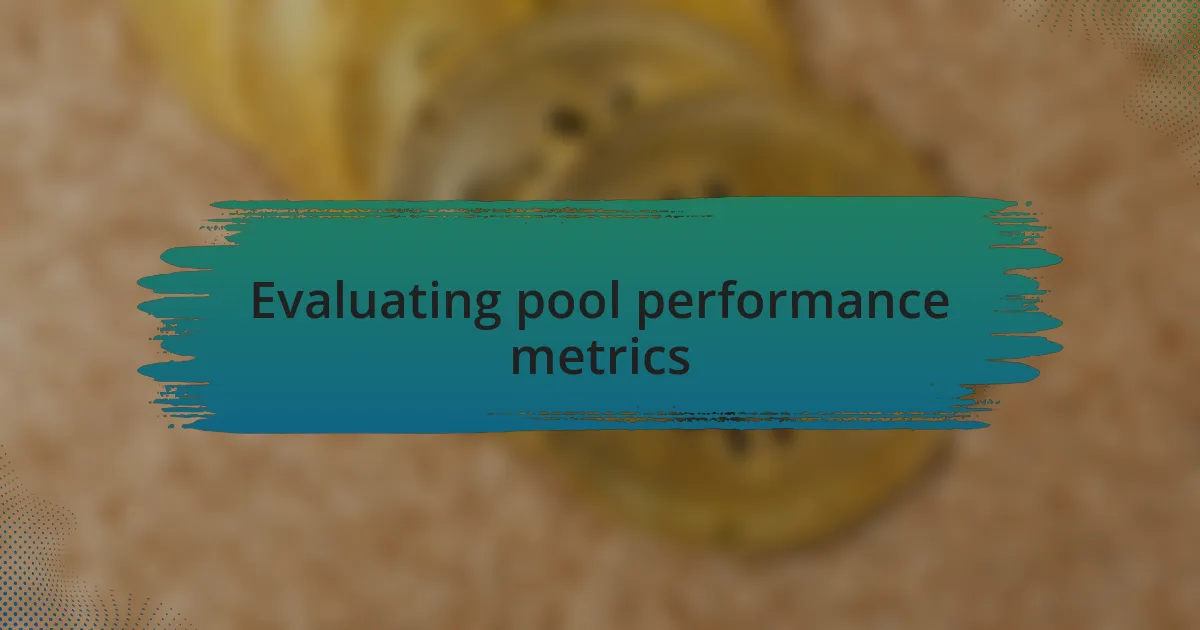
Evaluating pool performance metrics
When I dive into evaluating pool performance metrics, profitability is always at the forefront of my mind. I often look at metrics like hash rate and block times, which directly influence how quickly and efficiently a pool can process transactions. For example, during one mining venture, I noticed that a pool with a consistent hash rate led to quicker block discoveries, resulting in a more stable income compared to others I tried. Have you observed how critical these metrics can be in your own experience?
Another aspect I pay close attention to is the pool’s consistency. I remember when I analyzed pool performance over a month and found discrepancies in payout consistency, which can really throw off your expectations. The variability in rewards can be frustrating, especially when you’ve allocated significant resources to mining. It’s like when you expect a reliable paycheck, but instead, you experience sudden swings in your rewards; have you felt that disappointment too?
Lastly, responsiveness and support are metrics that often get overlooked. A few times, I’ve encountered technical issues and the quality of communication from the pool’s support became crucial for me. I recall reaching out to a pool during a server downtime and receiving timely updates, which put my mind at ease. Wouldn’t you agree that having a responsive team can make a world of difference when things go awry?
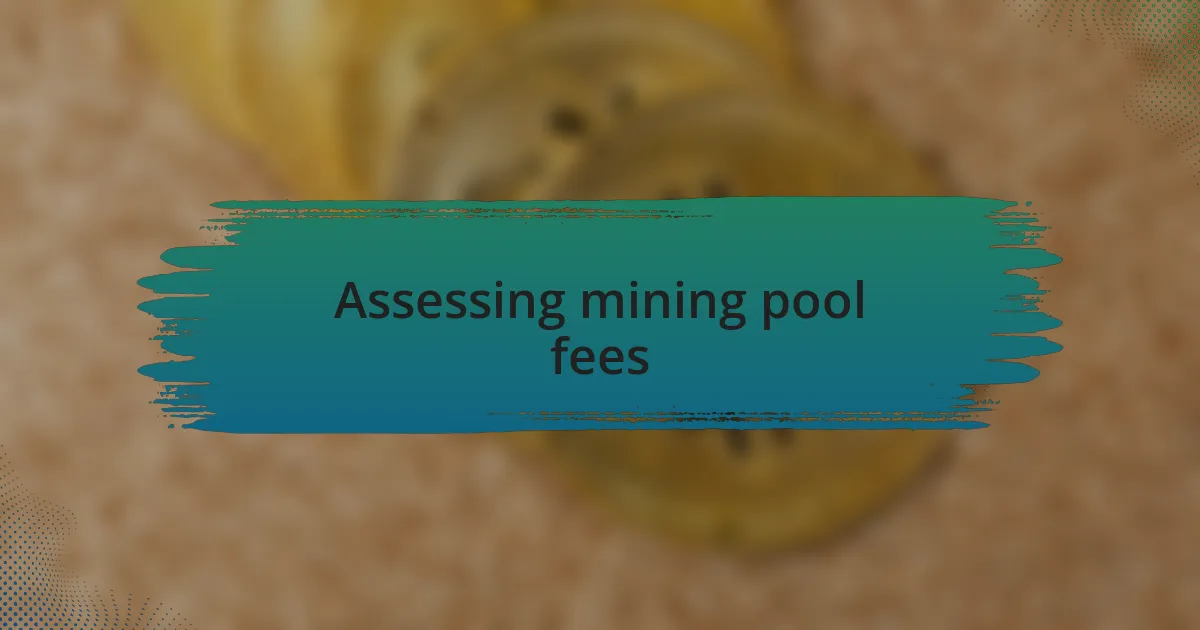
Assessing mining pool fees
When it comes to assessing mining pool fees, I often find that understanding the different fee structures is essential. Many pools charge a flat percentage fee on your earnings, but I’ve encountered some that also implement hidden costs, such as withdrawal fees. Once, I was caught off guard by a high withdrawal fee, which significantly cut into my overall profits. Have you ever faced unexpected charges that dashed your expectations?
Additionally, I believe it’s vital to consider how these fees impact your overall profitability. For instance, I often run calculations comparing various pools, factoring in the fees alongside their performance metrics. I remember switching to a pool with slightly higher fees, but it was worth it because their payout frequency compensated for the cost. Have you done similar comparisons, and how did it influence your choices?
Finally, knowing how transparent a pool is about its fees can tell you a lot. There was a time when I joined a pool where the fee structure was clearly laid out upfront, almost like a breath of fresh air. This clarity not only built my trust but also made it easier for me to strategize my mining efforts without worrying about hidden surprises down the line. Do you feel that having clear information improves your confidence in a mining pool?
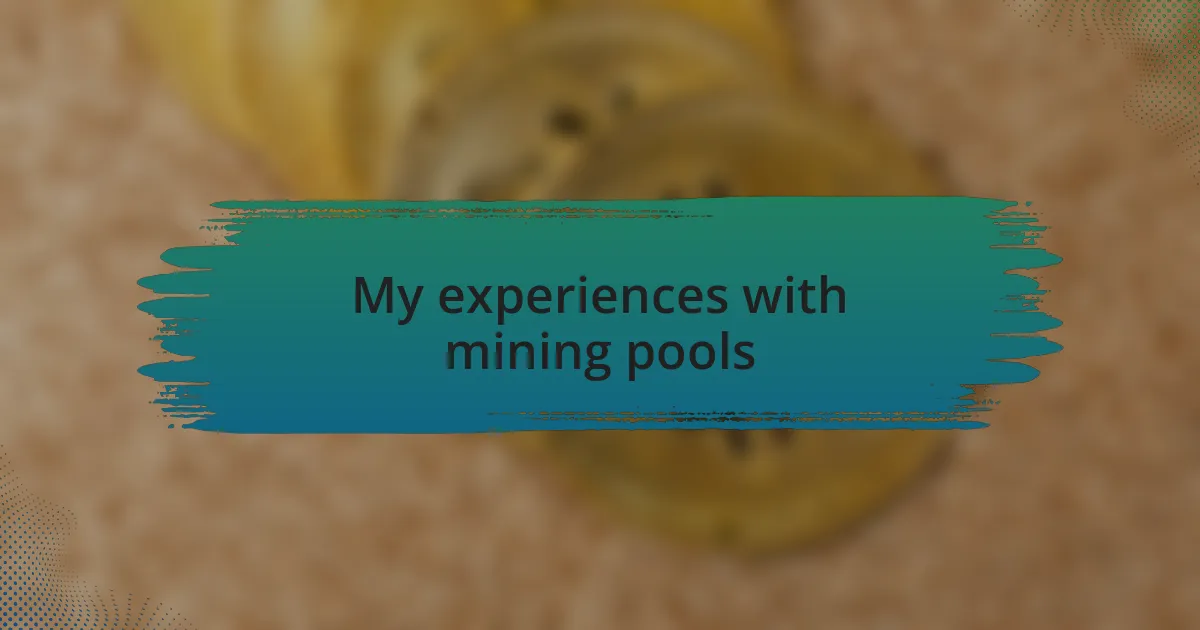
My experiences with mining pools
My experiences with mining pools have been quite enlightening. I remember my first foray into mining; I naïvely chose a pool based solely on its size, thinking that bigger meant better. However, after a few weeks, I realized that the larger pools often had more competition, which translated to longer wait times for payouts. Have you ever jumped into something thinking it was the best choice, only to find the reality doesn’t quite match up?
As I continued to explore different pools, I discovered the variety in community engagement. For one pool I joined, the active forums created an invaluable sense of camaraderie. I found it comforting to share insights and strategies with others who were just as invested in mining. This emotional connection fostered by a supportive community truly enhanced my overall experience. Have you found that interactions with fellow miners influenced your mining journey?
Another lesson I learned was the importance of evaluating pool reliability. I once experienced significant downtime with a pool that had constant server issues. This not only halted my earnings but also left me frustrated. It made me appreciate the pools that prioritize uptime and support. Have you had similar frustrations, and did they shape how you assess the reliability of a mining pool?